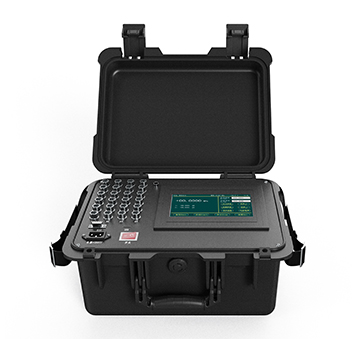- Thermal Signal Calibrator
- Rotational Speed Calibration Device
- Sensor Test Bench

Get more product information
Instructions for Using a Multifunctional Temperature Calibrator
Release time:2024-06-24
Multifunctional temperature calibrator is a precision instrument used for calibrating and verifying temperature sensors, temperature transmitters, and temperature measurement device. It can provide a stable temperature source and measure as well as display temperature. The following is the usage method of the multifunctional temperature calibrator:

1. Preparation work
1). Check the device: Before use, check whether the calibrator is intact and ensure that there is no damage.
2). Power connection: Connect the calibrator to the power supply to ensure that the power supply voltage meets the device requirements.
3). Preheating: According to the device manual, preheating the calibrator usually takes a few minutes.
2. Set the temperature
1). Selection mode: Select the temperature calibration mode as needed, such as dry well mode or liquid bath mode.
2). Set temperature:
-Use the control panel or touch screen of the calibrator to input the required calibration temperature value.
-Activate the heating or cooling function to bring the calibrator to the set temperature.
3. Calibration process
1). Insert the sensor:
-Insert the temperature sensor, transmitter, or measuring device that needs to be calibrated into the temperature bath or dry well of the calibrator.
-Ensure that the sensor is in full contact with the temperature source of the calibrator to obtain accurate temperature readings.
2). Stable temperature:
-Waiting for the temperature of the calibrator and sensor to stabilize usually takes a few minutes.
-The calibrator usually displays the current temperature and the set temperature to ensure consistency between the two.
3). Record readings:
-Record the temperature value displayed by the calibrator and the temperature value output by the sensor.
-Compare the differences between the two and calculate the sensor error.
4. Adjustment and calibration
1). Adjust the sensor:
-Adjust the output of the sensor or transmitter based on the recorded error to match the temperature of the calibrator.
2). Repeat calibration:
-Repeat the above steps to ensure the accuracy of the sensor at different temperature points.
-Usually, multiple temperature points need to be selected for calibration, such as low temperature point, medium temperature point, and high temperature point.
5. End calibration
1). Turn off the calibrator: After completing the calibration, turn off the heating or cooling function of the calibrator.
2). Remove the sensor: Carefully remove the sensor to avoid damage.
3). Record data: Record calibration data in the calibration report, including set temperature, actual temperature, and error.
6. Maintenance and Storage
1). Clean the deivce: After use, clean the calibrator to ensure that there are no residues.
2). Storage for the device: Store the calibrator in a dry and ventilated place to avoid moisture and damage.
NOTES
1. Safe operation: During use, follow the safety operation procedures to avoid high temperature burns or low temperature frostbite.
2. Regular calibration: Regularly calibrate the calibrator to ensure its accuracy and reliability.
3. Environmental conditions: Calibration should be carried out under stable environmental conditions to avoid the influence of temperature fluctuations and air flow on the calibration results.
Through the above steps and precautions, the correct use of the multifunctional temperature calibrator and accurate calibration of the temperature sensor can be ensured.
Customer Service Center


